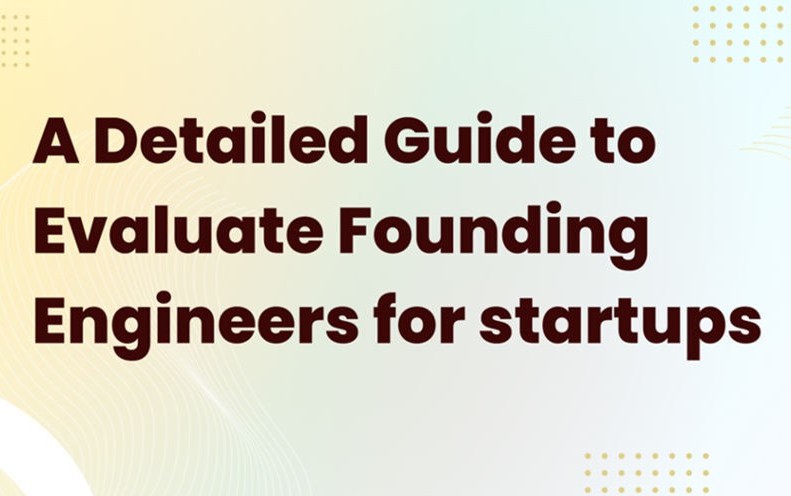Can you explain the difference between a relational
database and a NoSQL database, and when would you choose one over the other for a
specific project?
A relational database uses a structured schema
to store data in tables with predefined relationships between them, while a NoSQL
database stores data in a flexible, schema-less format, often using key-value pairs
or JSON documents. I would choose a relational database when dealing with structured
and well-defined data with complex relationships, such as in financial systems. On
the other hand, I would opt for a NoSQL database for projects involving unstructured
or semi-structured data, like in big data analytics or content management systems.
How do you ensure data quality and accuracy in a
large-scale data architecture? What are some common data quality issues, and how do
you address them?
Ensuring data quality is critical for any data
architecture. I implement data validation checks during data ingestion to identify
and handle anomalies or errors. Common data quality issues include missing values,
duplicates, inconsistent data, and data format discrepancies. I use data profiling
techniques to identify and address these issues, implement data cleansing processes,
and enforce data quality standards across the organization. Regular data monitoring
and feedback loops help maintain data accuracy and integrity over time.
In a cloud-based data architecture, what are the key
factors to consider when selecting the appropriate cloud storage and database
services?
When selecting cloud storage and database
services, factors to consider include data volume, performance requirements, data
access patterns, scalability, security, and cost. I assess the performance and
throughput needs of the application and choose a cloud storage service that aligns
with the project's requirements. Additionally, I evaluate the database options
provided by the cloud provider, considering features like managed services, data
replication, backup and recovery options, and compliance with data privacy
regulations.
How do you design a data warehouse architecture to
support real-time analytics and reporting for business intelligence purposes?
To support real-time analytics, I design a data
warehouse architecture using technologies like in-memory databases, columnar
storage, and data streaming platforms. I implement data pipelines and ETL (Extract,
Transform, Load) processes to ingest, process, and transform data in real-time.
Additionally, I create optimized data models and utilize caching techniques to
improve query performance. The goal is to ensure that business users can access
up-to-date and actionable insights for informed decision-making.
Describe a situation where you had to migrate a
company's data from an on-premises data center to a cloud-based infrastructure. What
were the challenges you faced, and how did you ensure a seamless migration process?
In a data migration project, the key challenges
include data security, data integrity, and minimizing downtime during the
transition. I ensured a seamless migration by conducting thorough planning and risk
assessment. I used data encryption and secure network connections to protect
sensitive data during transit. I performed multiple rounds of testing and validation
to verify data integrity. To minimize downtime, I planned the migration during
off-peak hours and utilized incremental data synchronization techniques. The
successful migration resulted in improved scalability, accessibility, and
cost-efficiency for the organization.
Imagine you are joining a project with existing data
architecture that lacks documentation and clear design principles. How would you
approach understanding and improving the architecture?
In such a scenario, I would start by conducting
a comprehensive data architecture review to understand the current state, data flow,
and existing data models. I would engage with stakeholders and subject matter
experts to gather insights into data requirements and pain points. Documenting the
existing architecture and identifying gaps or inefficiencies would be the next step.
Based on the assessment, I would propose improvements to align the architecture with
industry best practices, scalability, and data governance principles.
How do you ensure data security and compliance with
data privacy regulations when designing a data architecture that involves sensitive
or personally identifiable information (PII)?
Data security is a top priority in any data
architecture. To protect sensitive data, I implement data encryption, access
controls, and user authentication mechanisms. I follow data privacy regulations,
such as GDPR or CCPA, to ensure compliance with data handling and consent
requirements. Regular security audits and monitoring help identify potential
vulnerabilities and enforce data security policies. Additionally, I collaborate with
legal and compliance teams to align the data architecture with relevant privacy
regulations.
You are tasked with integrating data from multiple
external sources into the organization's data architecture. How do you ensure data
quality, consistency, and reliability when dealing with data from diverse sources?
When integrating data from external sources, I
conduct data profiling and validation to understand the data structure and quality
of each source. Data cleansing and transformation processes are employed to
standardize and harmonize data across sources. I create data mapping and
transformation rules to align the data with the organization's data models. Regular
data monitoring and quality checks help ensure consistency and reliability of the
integrated data. Implementing data lineage and metadata management further enhances
data traceability and transparency.
You are part of a project that requires real-time data
processing and analysis for real-time decision-making. How would you design an
architecture that can handle high-velocity data streams efficiently?
To handle high-velocity data streams, I would
opt for technologies like data streaming platforms (e.g., Apache Kafka) and
in-memory databases. I design data pipelines with low-latency processing
capabilities to ingest, process, and analyze data in real-time. Parallel processing
and distributed computing techniques help scale the architecture to handle the data
volume and velocity effectively. By implementing a data architecture that optimizes
data ingestion, processing, and storage, the organization can make timely and
data-driven decisions.
Describe a scenario where you had to balance
conflicting requirements from different business units for a data architecture
project. How did you resolve the conflicts and come up with a solution that
satisfied all stakeholders?
In a project with conflicting requirements, I
scheduled meetings with representatives from each business unit to understand their
needs and objectives. I facilitated open discussions to find common ground and
prioritize requirements based on their impact and alignment with organizational
goals. By presenting trade-offs and potential implications of each decision, I
engaged stakeholders in a collaborative decision-making process. Working closely
with stakeholders and emphasizing the benefits of a unified data architecture, I
successfully reached a consensus on a solution that satisfied all parties involved.
Describe a challenging data architecture project you
led, where you had to navigate complex technical requirements and business
constraints. How did you manage the project and ensure its successful delivery?
In a data architecture project involving data
consolidation from multiple business units, I faced diverse data formats,
incompatible systems, and stringent project timelines. To manage the project
effectively, I employed a phased approach, starting with a detailed analysis and
data profiling. I collaborated closely with the business units to gain their buy-in
and ensure data accuracy. By leveraging automation and process optimization, we
successfully consolidated the data and delivered an integrated data architecture
that met all stakeholders' needs.
How do you keep yourself updated with the latest
trends and advancements in data architecture and technology?
I am a strong believer in continuous learning.
I regularly attend data architecture conferences, participate in webinars, and read
research papers and technical blogs to stay updated with industry trends. I also
collaborate with peers and engage in knowledge-sharing forums. The knowledge I gain
is directly applied to my work, as I incorporate best practices, emerging
technologies, and innovative solutions into data architecture designs. By staying
abreast of the latest advancements, I can deliver data architectures that are
cutting-edge, efficient, and aligned with industry standards.
Can you recall a time when you faced a significant
technical challenge in a data architecture project? How did you overcome it, and
what did you learn from the experience?
In a data migration project, we encountered
unexpected data inconsistencies that required extensive data transformation and
cleansing. To address the challenge, I collaborated with data analysts and subject
matter experts to identify root causes and devise effective solutions. We
implemented custom data transformation rules and conducted thorough testing to
verify the data integrity. This experience taught me the importance of anticipating
potential challenges, engaging subject matter experts early on, and having robust
data validation processes in place to ensure successful project outcomes.
How do you manage stakeholder expectations and
communicate complex technical concepts to non-technical stakeholders in your data
architecture projects?
Effective stakeholder management is crucial in
data architecture projects. I ensure regular communication with stakeholders,
providing updates on project progress, milestones, and potential risks. When
communicating complex technical concepts, I use clear and concise language, avoiding
technical jargon. Visual aids, such as data flow diagrams or process maps, help
convey technical details in an accessible manner. By actively listening to
stakeholders' concerns and providing transparent explanations, I build trust and
foster a collaborative atmosphere that supports project success.
Describe a time when you had to lead a
cross-functional team in a data architecture project. How did you ensure effective
collaboration and coordination among team members from diverse backgrounds and
expertise?
In a cross-functional data architecture
project, I established clear roles and responsibilities for each team member to
ensure accountability. Regular team meetings and progress updates facilitated
communication and collaboration. I promoted a culture of open feedback and
encouraged team members to share their expertise and ideas freely. By actively
involving team members in the decision-making process and acknowledging their
contributions, I fostered a positive and collaborative environment that led to
successful project execution.









